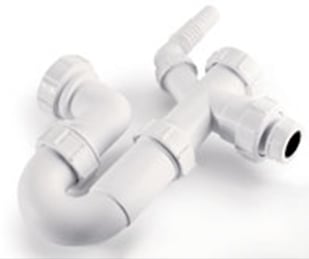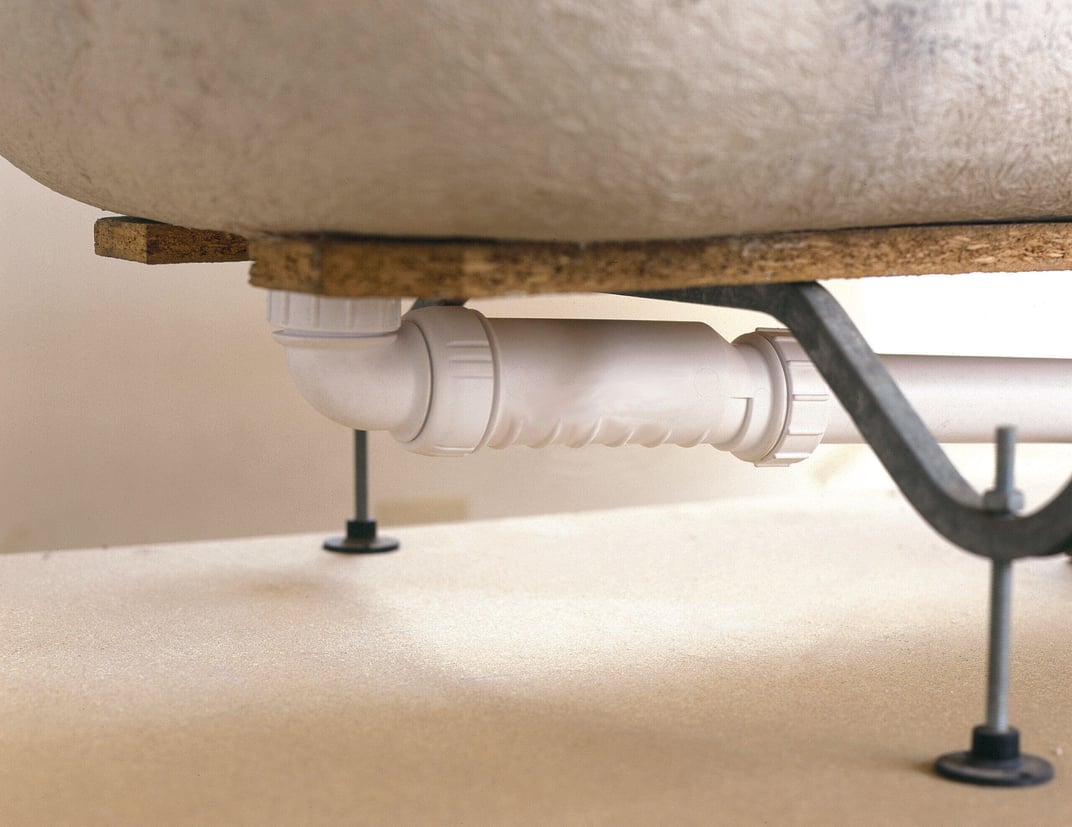
Examples of some of the design flaws in bathrooms that can lead to pressure fluctuations include the following (which might be found for example in an adjacent bathroom and ensuite):

Water seal traps have been habitually installed by the industry for many years, however, they are vulnerable if
such pressure fluctuations occur. This will cause the tell-tale gurgling which indicates that siphonage is occurring in the system and that the water seal has been broken, and foul air allowed in. As Hep O is waterless, it prevents foul air from entering a building when siphonage might have otherwise been a factor.
Part H details the maximum length of branch pipework, which is permitted for different appliances in an unvented situation. However, installing a Hep O instead of a water trap effectively vents the branch pipe. So, for instance, a 32mm waste run can extend to 3m without increasing the pipe diameter to 40 mm, once a Hep O is introduced.


Wavin HepVO waterless trap
There are many situations where a water trap might fail, but these are all avoided with a waterless trap such as Wavin’s self-sealing waste valve HepVO. Its unique membrane design allows fresh air in until equilibrium is achieved and negative pressure removed and then closes to create an air-tight barrier between the living space and the drainage system. No venting is required and siphonage cannot occur. The product also allows straight or vertical pipe runs to be created, allowing for a more straightforward system design, in addition to longer runs from the waste, providing increased design freedom.
This CPD covers an insight into the requirements of Part H, key design considerations and information on installation and testing. Book now

